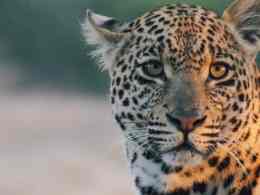The giraffe, also scientifically known as Giraffa camelopardalis, is an artiodactyl mammal native to Africa.
It is the biggest ruminant and the tallest among living land-based animals.
The giraffe is considered a single species but has nine subspecies classified under it.
Numerous extant giraffe species are based on research derived from nuclear DNA and morphological measurements.
The giraffe has been a consistent source of intrigue for modern and ancient cultures.
This is due to its peculiar appearance, which is why it’s prominently featured in various forms of literature.
They exist in multiple national parks, game reserves, and the wild. The giraffes primarily move by walking and galloping.
The giraffe depends on the back-and-forth motions of its neck and head to maintain balance while in fast motion.
They are very fast animals despite their height. They can clock up to 60 kilometers per hour on short and 50 kilometers per hour on long distances.
The giraffe owes its several adaptations for its massive height to its unique circulatory system. Its heart weighs as much as 11 kilograms and is about 2 feet long.
The heart must produce roughly double the blood pressure it requires humans to sustain blood flow to the brain.
They have a heart wall as thick as 3 inches and an uncommonly high heart rate.
Their heart clocks at 150 beats each minute…
Scientific Classification
| Kingdom | Animalia |
| Phylum | Chordata |
| Class | Mammalia |
| Order | Artiodactyla |
| Family | Giraffidae |
| Genus | Giraffa |
| Scientific name | Giraffa camelopardalis |
Size
An adult giraffe that has peaked its growth ranges from 14 feet to 19 feet tall, with the males taller than the females.
The highest height a male giraffe has ever recorded is 19.3 feet, while the highest for a female is 17 feet.
An adult male weighs about 1,192 kilograms, while a female weighs about 828 kilograms.
The heaviest male giraffe has weighed 1,930 kilograms, while the heaviest for a female is 1,180 kilograms.
The giraffe’s neck and legs are responsible for its great height. The giraffe also has an 18-inch tongue.
Description
The giraffe has a short body, contrasting its lengthy neck and legs. They have two massive eyes on both sides of their head.
This gives them a good command of sight, and their height renders them a vantage point.
They see in color and have a keen sense of smell and hearing. The giraffe has the uncanny ability to protect its internal system against ants and sandstorms by closing its nostrils.
The giraffe’s tongue has a purplish-black hue. This tongue is utilized by the animal to pluck foliage and clean its nose. The animal’s upper lip is prehensile, like the tongue, and hairy.
This hair concentration helps to keep thorns at bay while the giraffes are foraging. The inner section of their mouth and tongue is covered in papillae (the mucous membranes formed by cells from under the tongue).
The coat of the giraffe has dark blotches that could range from chestnut and brown to almost black color. This coat is separated by light hair, usually white or cream.
With age, the male giraffe becomes darker, and their coat also aids them in camouflaging in the savannah woodlands. Even with their great height, it isn’t easy to see them even from a close distance.
The adult giraffes move around to assess an oncoming predator, relying on their size rather than camouflage for defense. Like tigers and ocelots, the giraffe’s coat pattern is unique to each individual.
Most of the giraffe’s skin is grey or tan, and it has a thick skin that allows it to glide through thorns without getting punctured.
Habits
A giraffe takes its rest by laying its body atop its folded legs. The animal does this by kneeling on its foreleg before lowering the rest of its body.
The giraffe gets to its knees first to return to a standing position. Then, it spreads its legs at the rear to raise its backside, straightening its forelegs. With each move, the animal moves its head as well.
Captive giraffes can sleep periodically for about 4 to 6 hours daily, particularly at night. It mostly sleeps lying down, but it can also sleep while standing. Standing sleep is more common among older giraffes.
The giraffe drops to its knees or spreads its forelegs when it wants to drink water.
Habitat
The giraffe’s usual habitat includes open woodlands and Savannah. They also prefer Commiphora, Combretum, Acacieae, and open Terminalis woodlands. The desert is also another habitat for the giraffe, precisely the Angolan giraffe.
Diet
They preferably browse on the twigs of trees from the subfamily of Acacieae and the genera Commiphora and Terminalis. These plants are vital sources of calcium and protein, which maintain the giraffe’s growth rate.
They feed on grass, shrubs, and fruits; a giraffe can feed on about 34 kilograms of foliage daily. When under stress, the giraffe may chew bark off a few branches.
The giraffe is a herbivore, but it also visits dead animal bodies and licks dried flesh off the bones. Food is more abundant during the rainy season, and the giraffes are more dispersed.
In the dry season, they come together around the remaining green vegetation. Mother giraffes prefer to feed in open lands to detect predators quickly, but it comes at a cost.
The mother giraffes don’t feed as well as they should while also on the lookout for predators. The animal is a ruminant, so it first ingests the food and then visibly passes it half-digested. The cud moves up the neck and back into the mouth for the giraffe to chew again.
The giraffe usually salivates while feeding and doesn’t require as much foliage as other herbivores. This is because it has a more functional digestive system, and the nutrients in its foliage are concentrated.
Conversation Status
The giraffe is considered a “Vulnerable” species, according to the IUCN Red List.





